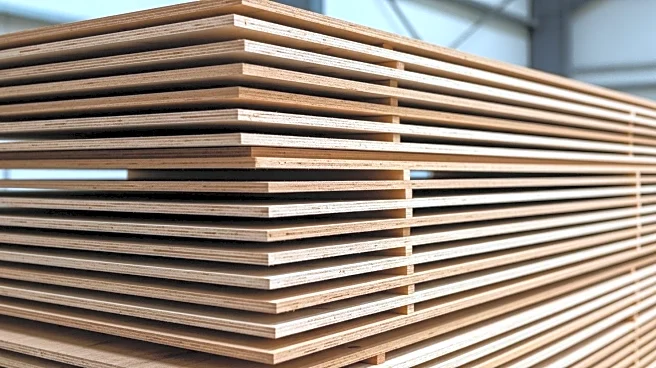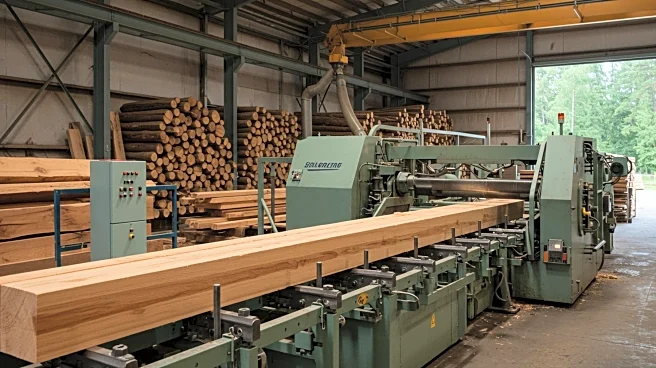What's Happening?
Cross laminated timber (CLT) is emerging as a key player in reducing carbon emissions in the steel and cement industries. By substituting concrete with CLT in construction, the demand for cement and rebar is decreasing, which contributes to the decarbonization of these heavy industries. The shift towards CLT is part of a broader trend in advanced economies moving from expansion to maintenance, with efficiency gains and material substitutions becoming more prevalent. This transition is supported by evolving building codes and procurement policies that recognize the benefits of low embodied carbon materials. The World Cement Association projects a significant decline in global cement demand by mid-century, aligning with the increased use of CLT and other sustainable materials.
Why It's Important?
The adoption of CLT in construction is crucial for achieving decarbonization goals in the steel and cement sectors, which are traditionally hard-to-abate industries. By reducing the demand for concrete and rebar, CLT helps lower emissions and supports the transition to cleaner production methods, such as electric arc furnaces powered by renewable energy. This shift not only addresses environmental concerns but also aligns with economic trends, as advanced economies focus on sustainable development and maintenance rather than expansion. The integration of CLT into construction practices represents a significant step towards achieving global climate targets and promoting sustainable urban development.
What's Next?
The continued adoption of CLT in construction is expected to drive further reductions in cement and steel demand, facilitating the transition to more sustainable production methods. Building codes and procurement policies will likely evolve to support the use of low embodied carbon materials, encouraging developers and designers to prioritize timber in construction. The steel industry may increasingly rely on electric arc furnaces and scrap-based pathways to meet demand. Challenges such as insurance market resistance and lumber supply volatility remain, but government procurement and investor focus on ESG mandates could accelerate the adoption of CLT solutions.











